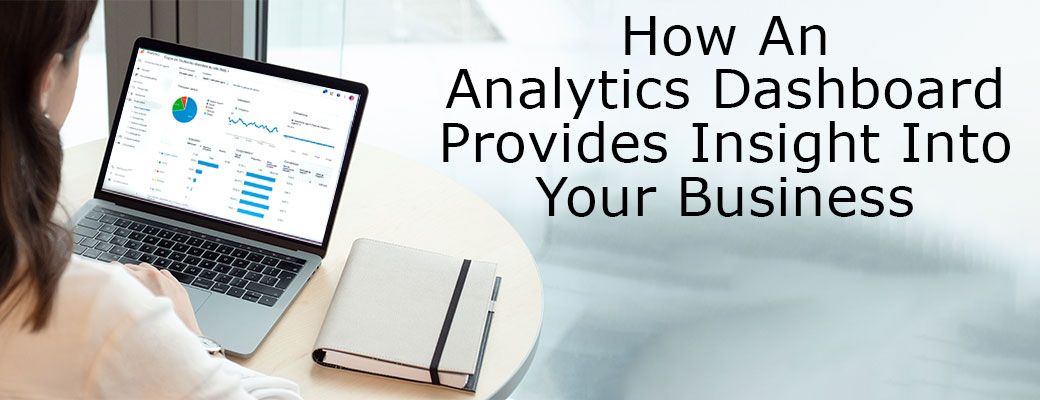How An Analytics Dashboard Provides Insight Into Your Business

Understanding the metrics and capabilities that comprise a dashboard is difficult, but hopefully we clear up any misconceptions so your website and business can dramatically improve in a short time.
What Does an Analytical Dashboard Do?
The purpose of analytical dashboards is so that users can dig further into company data or get a simple overview of the health of your organization. Strategic and operational data could be displayed on the analysis dashboard. While the dashboard makes it easy to present metrics and data, the interpretation of data is left to the users.
It should also be noted that an analytical dashboard is not the same as a BI dashboard, or Business Intelligence. Many people make the mistake that they are one in the same. If you would like to learn more about the difference, please read our previous blog, “Major Differences Between Business Analytics and Business Intelligence.”
How Can a Dashboard Help My Business?
Dashboards should include high-level summaries and reports to provide an objective view of business performance in terms of sales, profit margins and other key performance indicators or KPI’s. In retail, you could have an analytics dashboard for sales and marketing. Managers could use a dashboard to visualize their company’s sales and their teams, while a vice president would have to take a deeper look at his team’s performance. Data instruments offer objective insights into performance indicators and serve as an effective basis for further dialogue.
A well-designed dashboard adds value to the position of the data analyst and drives the action through data analysis. Visualizations offer the opportunity to go beyond a dashboard full of data to complete words and reinforce insights and recommendations for the analyst. Presenting data visually makes it easier to get a tangible grasp on the state of your business in one glance without having to spend all your time deciphering numbers.
However, an analytical dashboard like ArcAnalytics allows you to view information that cannot be part of a standard dashboard. Instead, this dashboard goes a step further by allowing you to view your top customers, your top selling products, and gauging them with graphs and line graphs.
ArcAnalytics uses raw data sources such as tables and databases to create a dashboard that users can view and instantly understand the key metrics they are looking for. Data can also be visualized in real time so that they can track the health of their business with benchmarks and goals. The dashboard can be used to visually represent your business, such as your sales, marketing, customer service and loyalty metrics.
This comprehensive dashboard provides an overview of key aspects of your retail business, enabling analysts to identify trends and provide management with the support needed for business processes. In addition, the dashboard provides you with reports on multiple data points to improve your business analysis.
How a Dashboard Improves Decision Making
How can you use insight, action and impact in your dashboard to show your understanding of the data and make the measures taken more convincing? See how the makers of these dashboards go through recommendations to end the impact on the business, to create a comprehensible and actionable dashboard.
Using a custom analytics dashboard simplifies data visualization by showing key site metrics that relate to your business at a glance. KPI analysis is a simple way to keep track of key figures that are critical to the business and can also link marketers to key figures. If you want to track the performance of your marketing efforts, such as sales, marketing spending, customer loyalty and retention, establishing a measurable marketing metric can help your businesses achieve their goals month after month. By being up to date with the best analytics tools for businesses, you are better prepared to manage and understand business data.
And Finally…
An analytical dashboard allows data savvy users to make strategic, medium-term decisions. By monitoring multiple KPI indicators in a central dashboard, users can adjust their business practices in real time. A dashboard can even help in the day-to-day operation of the manufacturing process, such as the production of parts and equipment, and a dashboard would highlight problematic changes in near-real time. There’s a lot to know and a lot to learn about business analytics. If you’d like to know more, take a look at ArcAnalytics here.
